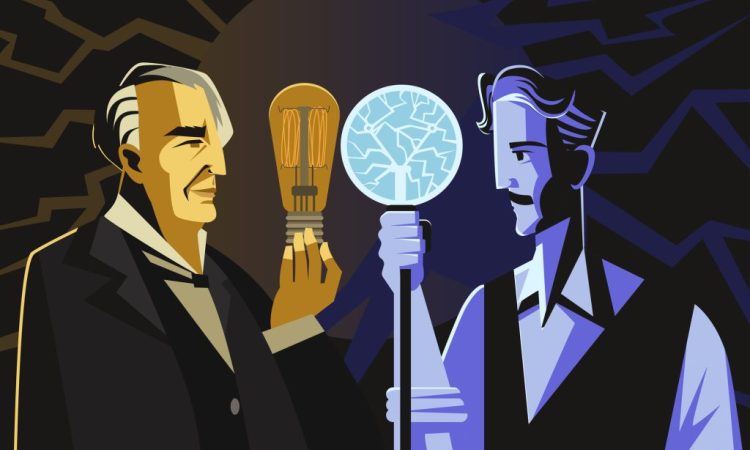
Here is everything you need to know about the so-called “war of currents”, commercial competition for the then nascent electricity market.
On October 18, 1931, the American inventor and entrepreneur famous for his great inventions died. His career, however, was not only a series of successes, but also and above all failures, marked by fierce competition with his rival George Westinghouse, in the so-called “war of currents”. It is called this to describe the scientific “clash” between Edison’s direct current and the alternating current supported by Westinghouse and Nikola Tesla.
Advertisement
But let’s take a step back, to August 6, 1890, prison in Auburn, New York. William Kemmler is the first death row inmate to be executed with the electric chair, a new instrument that had never been used before. The execution was a failure: a first 1,000 volt shock was not enough and a second 2,000 volt shock was needed which ended his life only after eight terrible minutes of agony. The episode cast a bad light on alternating current, the technology promoted by Westinghouse, which was blamed for the tragic outcome. But behind the scenes was Edison, hoping to discredit his rival by claiming that alternating current was too dangerous.
The beginning of the war of currents
At the basis of this clash was the desire to dominate the future of electricity. Edison, famous for incandescent lighting in the 1880s, had built an electrical grid based on direct current, which was safe, but inefficient for transmission over long distances. George Westinghouse, on the other hand, saw greater potential in alternating current, thanks to the possibility of transforming it from low to high voltage to reduce losses along the cables.
In 1887, Edison already had 121 direct current power plants, but Westinghouse pressed him with 68 alternating current power plants, capable of covering greater distances at lower costs. This pushed Edison to launch a defamatory campaign against alternating current, going so far as to publicly demonstrate its dangerousness through the execution of animals.
Tesla’s intervention
Into this scenario fits Nikola Tesla, a brilliant Serbian inventor, who arrived in the United States in 1884. Initially he worked for Edison, but the two clashed over effectiveness. Tesla left Edison and, after obtaining funds from some investors, managed to develop his alternating current motor. George Westinghouse, recognizing the potential of his invention, supported him, taking the technology to the next level.
Tesla and Westinghouse effectively won the “war of currents” when they got the job of lighting the 1893 Chicago Fair, demonstrating to the world the superiority of alternating current. Even Edison’s own company, now ousted from the board of directors, switched to alternating current, contributing to its birth della General Electric.
A bitter ending
Despite his success, Tesla, the true moral winner of the war of currents, gave up on becoming a millionaire, tearing up the contract with Westinghouse when the latter explained to him that to pay his bills royalties he would have to close his company. Tesla continued to work on new inventions, but his path ended in disgrace, consumed by his mental problems and no longer having economic resources.
This historic diatribe marked the beginning of a new era for the “electrification” of the world, leaving an indelible mark in the history of humanity, with a significant impact even today.
Read more:

